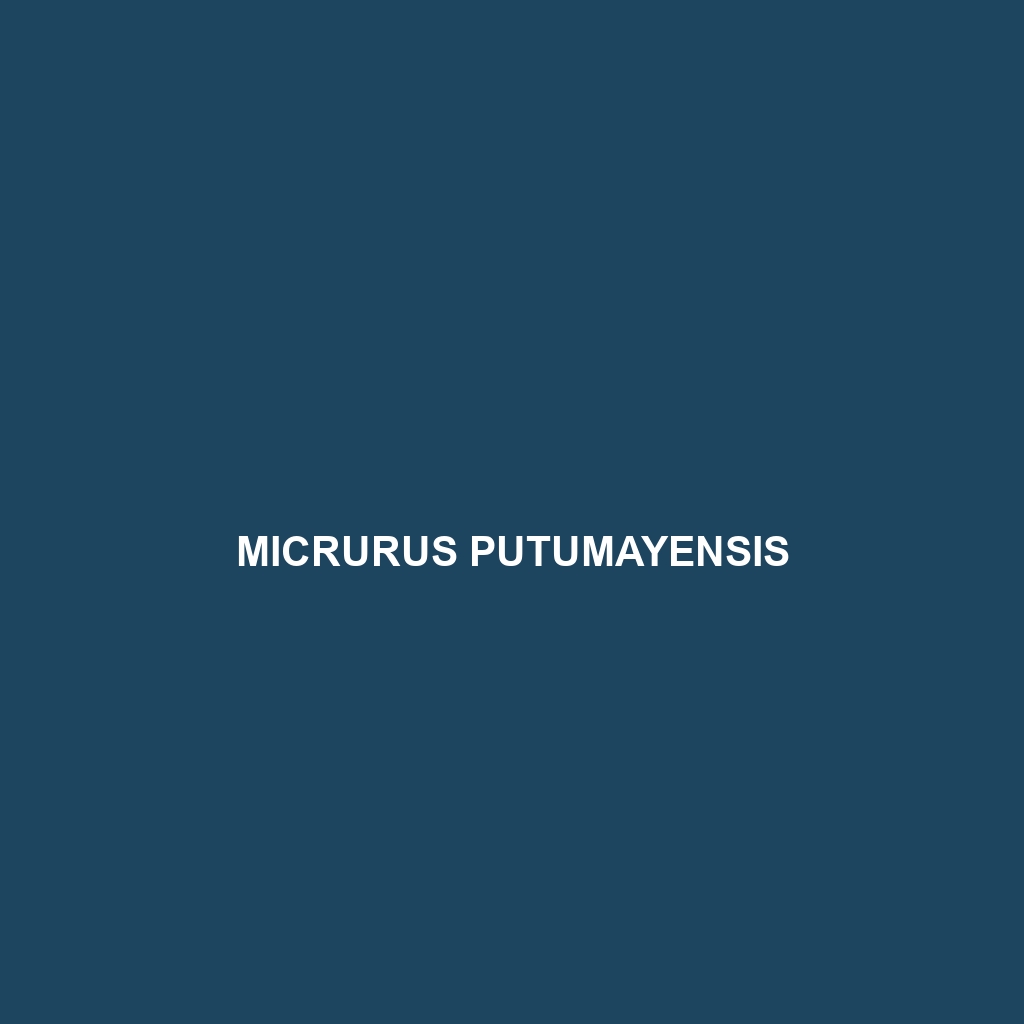Common Name
Micrurus putumayensis
Scientific Name
Micrurus putumayensis
Habitat
Micrurus putumayensis, commonly known as a species of coral snake, is primarily found in the tropical rainforests of the Putumayo region, which spans parts of Colombia and Peru. This snake inhabits dense foliage that provides ample cover, as well as areas near riverbanks. These rainforests are characterized by high humidity and a warm climate, creating an ideal environment for this species. Additionally, Micrurus putumayensis can occasionally be observed in adjacent savannas or disturbed areas, although its preference remains the lush, moist atmosphere of rainforests. The complex ecosystem of these habitats supports a great variety of life, making it a crucial area for biodiversity preservation.
Physical Characteristics
Micrurus putumayensis can be identified by its striking color patterns, which serve as both camouflage and warning coloration. Typically, this species reaches lengths of approximately 1 to 1.5 meters (3 to 5 feet), exhibiting a slender body shape. The coloration features bright red, black, and yellow bands around the body, a hallmark of many coral snakes. The specific arrangement of these colors is vital for identification; in general, the black bands are often wider than the red ones, a characteristic that distinguishes Micrurus putumayensis from non-venomous look-alikes. The head is somewhat elongated, and the eyes are small, which is typical for this group of snakes.
Behavior
Micrurus putumayensis displays a range of behaviors that are intriguing to researchers and enthusiasts alike. This species is primarily nocturnal, taking advantage of the cover of darkness to hunt and avoid predators. During the day, these snakes tend to hide beneath leaf litter or in the crevices of rocks, minimizing their visibility. Mating rituals occur in the rainy season when the snakes become more active, engaging in elaborate displays to attract mates. Social interactions are minimal outside of mating seasons, with individuals being largely solitary.
Diet
The diet of Micrurus putumayensis primarily consists of small reptiles and amphibians, categorizing it as a carnivore. This snake employs a unique feeding strategy; it uses its potent venom to immobilize its prey quickly before consumption. The diet varies seasonally based on prey availability, with a preference for frogs and lizards prevalent in its habitat. Its role as a predator helps regulate the populations of these prey species, contributing to the ecological balance within its rainforest ecosystem.
Reproduction
The reproductive cycle of Micrurus putumayensis is fascinating and typically begins in the wet season, when males perform courtship displays to attract females. After mating, females lay clutches of 3 to 12 eggs, which are incubated in the nest until hatching. Depending on environmental conditions, the gestation period lasts around 60 to 75 days. After hatching, the young snakes are independent and receive no parental care, emerging fully equipped with venom to hunt for themselves. This reproductive strategy is common among many snake species, facilitating rapid population turnover and resilience within fluctuating environments.
Conservation Status
Currently, Micrurus putumayensis is listed as ‘vulnerable’ due to habitat loss driven by deforestation and agricultural expansion in its native regions. Conservation efforts are underway to protect the rainforests of the Putumayo region, which are critical not only for Micrurus putumayensis but also for countless other species. Challenges remain, however, as habitat destruction continues, threatening the delicate balance of these ecosystems. Awareness and active conservation initiatives are essential to ensure the survival of this unique species.
Interesting Facts
One of the unique adaptations of Micrurus putumayensis is its ability to remain motionless for extended periods, allowing it to ambush unsuspecting prey. Additionally, like other coral snakes, its vibrant coloration serves as a natural warning to potential predators, indicating the danger posed by its venomous bite. Despite its formidable defense mechanisms, this species is more inclined to avoid confrontation and escape when threatened. The presence of this snake in its ecosystem highlights the intricate relationships that exist in tropical environments.
Role in Ecosystem
Micrurus putumayensis plays a crucial role as both predator and prey within its rainforest ecosystem. As a predator, it helps manage populations of smaller reptiles and amphibians, contributing to a balanced food web. Furthermore, its presence indicates a healthy ecosystem, as it thrives in dense, biodiverse environments. Additionally, like many snakes, it serves as a food source for larger predators, thus becoming an integral part of the trophic dynamics in its habitat. Protecting species like Micrurus putumayensis is vital for maintaining the ecological integrity of their environments.
